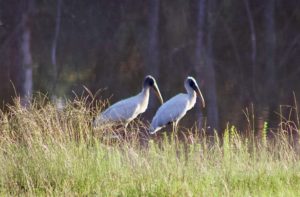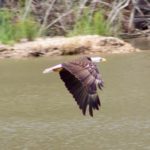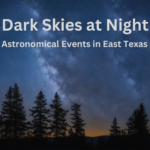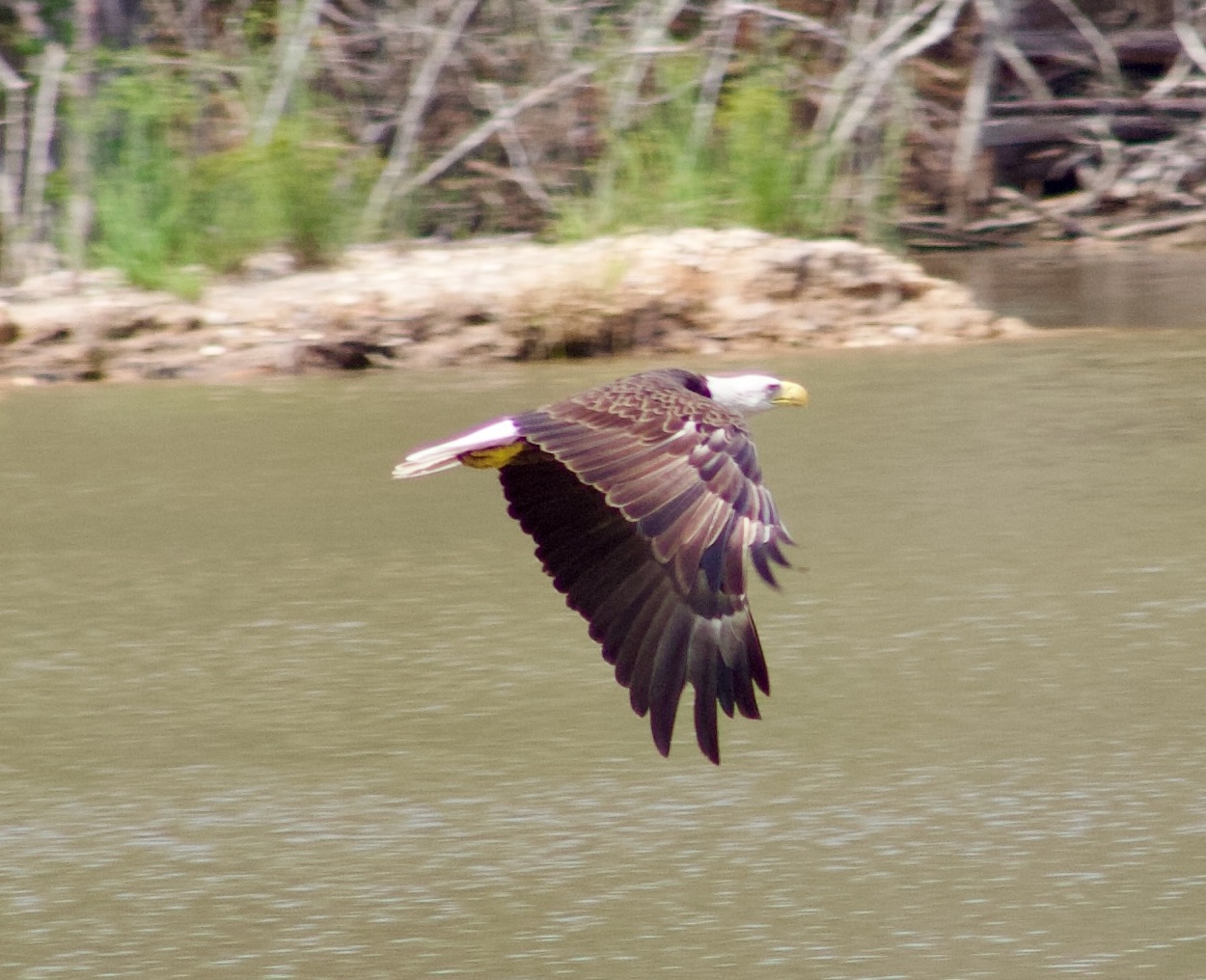In my article on birdwatching, I talked about how to get started birdwatching. In this article it’s time to move past the backyard and find out where to birdwatch in East Texas.
Because of the variety of habitats found in East Texas, including forests, fields, and urban areas you can find many varied birds. Even the most common ones are somehow distinctive. The Northern Mockingbird, known for mimicking other birds, may have a much more diverse song because of all the other avian residents around them. The Red-bellied woodpeckers are so plentiful that it would be uncommon not to see them climbing up and down the trunks of trees at any given point in the day. Carolina chickadees provide beautiful melodies throughout the day. And the Eastern bluebird lights up the forest with a bright flash of blue. These more common birds are relatively easy to see and identify, making them popular with birdwatchers.
Birdwatching has many health benefits
• It’s relaxing and stress relieving. Simply watching birds go about their daily activities can have a calming and soothing effect.
• It gets you outside and active. Bird watching requires walking, sometimes hiking, to see birds in their natural habitats. This can help you be more physically active.
• It connects you to nature. By bird watching, you become more aware of birds and the natural environment. You observe the plants, seasons and insect life that birds also depend on.
• It’s a mental workout. Properly identifying birds requires learning about their various shapes, colors, patterns, behaviors and calls. This can exercise your brain.
• It’s a social activity. Many people enjoy bird watching as a group activity with friends or as part of a bird watching club. It offers the opportunity for socializing while enjoying a common interest.
Where to Birdwatch in East Texas
Some of the top birdwatching spots in East Texas include:

A northern mocking bird
• Caddo Lake State Park
This wetland area is home to over 240 species of birds, including wood ducks, great egrets, green herons, and prothonotary warblers. It’s considered one of the best birdwatching spots in Texas.
• Big Thicket National Preserve
This preserve encompasses 100,000 acres of pine forests, wetlands, and bogs. It’s home to many rare birds like the red-cockaded woodpecker, Bachman’s sparrow, and black-and-white warbler.
• Daingerfield State Park
This small state park located in the piney woods of East Texas is a hotspot for migrating songbirds like indigo buntings, painted buntings, scarlet tanagers, and yellow-throated warblers. Over 200 bird species have been spotted here.
• Village Creek State Park
Just north of Beaumont, this state park offers birding trails through pine forests and cypress swamps. Notable birds include tufted titmice, Carolina chickadees, pine warblers, barred owls, and red-shouldered hawks.
• Texas Point National Wildlife Refuge
This refuge on the western shore of Galveston Bay is an important stopover site for migrating birds along the Central Flyway. You can spot birds like snow geese, piping plovers, long-billed curlews, reddish egrets, and black skimmers.

Wood storks at a local pond
• Anahuac National Wildlife Refuge
Located on the eastern end of Galveston Bay, this wildlife refuge is home to large numbers of waterbirds like roseate spoonbills, great blue herons, tricolored herons, and black-necked stilts. Over 300 bird species have been recorded here.
• Sheldon Lake State Park
This state park near Houston encompasses a coastal prairie and lake. It’s a great spot to see birds like loggerhead shrikes, northern bobwhites, yellow rails, LeConte’s sparrows, and seaside sparrows. Over 320 bird species have been spotted at this park.
The Boliver Peninsula
A special note goes to the Bolivar Peninsula, which is one of the top birdwatching spots in the United States during the spring migration.
• It’s located along the Gulf Coast, along the Central Flyway for migrating birds. Huge numbers of waterbirds, shorebirds, and songbirds migrate through the peninsula each spring and fall.
• It has a variety of habitats like beaches, marshes, wetlands, and grasslands that attract many bird species. Shorebirds are especially abundant along the peninsula’s beaches and mudflats.
• High Island
Located on the Bolivar Peninsula, High Island is one of the preeminent birding spots in Texas. Each spring, thousands of birds rest and refuel in the woodlands and wetlands of High Island after crossing the Gulf of Mexico.
• Several bird rookeries and nesting colonies are found along the Bolivar Peninsula, including large heronries at Smith Oaks Bird Sanctuary and Justin Hurst Wildlife Management Area.
• Rare and specialty birds are frequently spotted on the peninsula, like Harlequin ducks, white-tailed tropicbirds, Swainson’s hawks, and Smith’s longspurs.
• Well-known birding sites on the Bolivar Peninsula include High Island, Rollover Pass, Bolivar Flats Shorebird Sanctuary, and McFaddin and Texas Point National Wildlife Refuges.
• The Bolivar Peninsula is home to thousands of resident and wintering birds, not just migrants. Birds like brown pelicans, black skimmers, terns, gulls, roseate spoonbills and many raptors can be seen year-round.

Brown headed cowbirds
Uncommon East Texas Birds to Look For
In addition to the migrating birds, there are several uncommon birds that make their home in East Texas.
Black-throated Blue Warbler
This small songbird is known for its bright blue head and throat. It is a summer resident of East Texas, where it breeds in wooded areas.
Cerulean Warbler
This small songbird is known for its bright blue back and head. It is a summer resident of East Texas, where it breeds in wooded areas.
Prothonotary Warbler
This small songbird is known for its bright yellow body and black cap. It is a summer resident of East Texas, where it breeds in wooded areas near water.
Swallow-tailed Kite
This large raptor is known for its long, forked tail. It is a summer resident of East Texas, where it breeds in open areas near water.
Scissor-tailed Flycatcher
This large flycatcher is known for its long, upturned tail. It is a summer resident of East Texas, where it breeds in open areas.
These birds are uncommon because they have specific habitat requirements or are declining in numbers due to habitat loss or other factors. However, they can be seen in East Texas if you know where to look.
Tips for spotting these uncommon birds
– Look for them in their preferred habitats. For example, the Black-throated Blue Warbler can be found in wooded areas, while the Swallow-tailed Kite can be found in open areas near water.
– Be patient and quiet. These birds can be shy and easily disturbed.
– Use binoculars or a spotting scope to get a better look.
– Ask local birders for advice. They may be able to tell you where to find these birds and what to look for.
Finding Local Birdwatchers
Birdwatching in East Texas can be as close as your backyard. But there are also plenty of public viewing spots as well as local birders to check out. The Audubon Society has local chapters in several East Texas towns. You can also find groups on Facebook or Meetup.
Whether you go with a group or set out by yourself, you will likely find plenty of places to commune with the local avian population. Happy birding!













